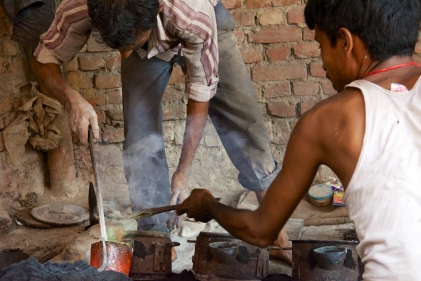
India’s political and economic scenario has undergone rapid changes since the early 1990s with the emergence of a predominantly ‘market’ led economy. These changes were the most profound on the industrial sector, with far-reaching changes in legislation and industrial practices that have drastically affected large sections of the Indian polity, including labour, consumer and the public at large.
The changes that took place in the 1990s were not as sudden as are often made out to be. The foundation for these policy changes had already been laid in the 1980s, with the gradual dismantling of a vast regulatory planning and mechanism that formed the backbone of Indian bureaucracy. However, the major impact of this changing regime came after the liberalisation in the 1990s.
In consonance with this ‘integration’ of Indian production with global production, manufacturing activity is being gradually restructured. Manufacturing activities in countries like India until recently was characterised by mass production, large-scale factories with dedicated lines, large investments in specialised machinery to produce large volume of standardised products and large buffer stocks. Today, this structure has given way to an era of flexible output and lean production techniques. Instead of large factories, there are flexible production cells, flexible technology and flexible specialisation in product strategy.
Flexibile production has lead to demands for labour market flexibility in countries like India. This has also led to segmentation of labour along core and periphery lines. A core labour force can adapt to both cyclical and secular changes in the level and composition of production. Multi-task and multi-skill are restricted to this core workforce. While the core employees are covered with standard contracts of payments, peripheral workers are engaged under a whole range of loose arrangements, which are tied more directly to the daily ebb and flow of the production cycle. The various means adopted for this purpose are recruitment of workers on short-term contracts, use of sub-contractors rather than direct employees, hire and fire policies, and employment of part-time workers who work outside job protection legislation or various combinations of casual, seasonal, contractual and fixed-term arrangements. Hence, as far as peripheral workers are concerned, they are rendered disposable rather than adaptable.
Thus, flexible labour in a nutshell means cheap and informalised labour, segmentation of labour and a rollback of labour rights and benefits. In this race for labour flexibility in the backdrop of mergers, consolidations, networking, alliances, outsourcing and new business arrangements, traditional employer-employee relations are being eroded. Today, almost all industries have been undertaking labour shedding, labour cost cutting and productivity enhancing measures in the name of global competition.